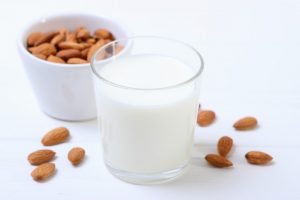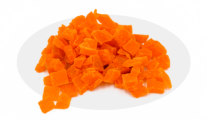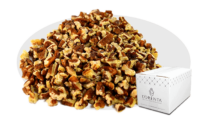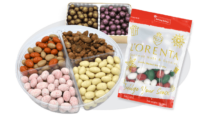Written By Sam Henselijn
Almonds are nutrient-dense and offer numerous health benefits. You’re probably curious about how to make almond milk at home. All you need are almonds, water, and a blender to make homemade almond milk, which is healthier than many store-bought options. Here is a guide to Almond Milk.
Instructions
It’s simple to make your milk at home. Simply combine almonds and water until the almonds are totally broken down to make the milk. The steps are as follows:
- Soak the almonds in water for at least two days, preferably overnight. In a basin, cover the almonds with approximately an inch of water. As they absorb water, they will plump up. Allow to sit on the counter overnight, covered with a cloth, or refrigerate for up to 2 days.
- Almonds should be drained and rinsed. Rinse the almonds under cool running water after draining them from their soaking water. If you pinch the almonds at this point, they should feel spongy.
- Put the almonds and water in a blender or food processor. Drain through a sieve and open a nondairy milk bag or cloth over a measuring cup.
- For 2 minutes, blend at the highest speed. To break up the almonds, pulse the blender a few times, then mix for 2 minutes. You need to grind the almonds to a fine powder and take clean water.
- Using a strainer, remove the almonds. Drain through a fine-mesh strainer with an open nut milk bag or cheesecloth placed over a cup. Halfway fill the sieve with the almond mixture.
- Using a press, extract all of the milk from the almond meal. Close the nut bag or cheesecloth around the almond mixture with a twist. To extract as much as possible, squeeze and press with clean hands. Approximately 2 cups should be obtained.
- To taste, adjust the sweetness. If you want a sweeter drink, taste the almond milk and add sweetener to suit.
Does almond milk go bad?
Yes, to put it more simply. Almond milk spoils, regardless of

whether it’s shelf-stable, refrigerated, or handmade. The expiration date and proper storage are two important considerations.
If you made your personal milk or bought a fresh bottle from a small producer, you only have five to seven days before it smells odd and begins to lump up.
This milk sold in stores is usually in a refrigerated carton. It’s recommended that you consume it within seven days of opening it. You’ll have about seven to ten days to consume it once it’s been opened if it’s a shelf-stable one that can be kept at room temperature until opening.
Is almond milk good for you?
almond milk is one of the most popular and available plant-based milk currently available. It’s a plant-based beverage that is dairy- and lactose-free by nature, giving it a great option for people who don’t eat dairy.
It’s filling, nourishing, and full of vitamins, antioxidants, and minerals. It is also cholesterol-free and contains extremely few calories and sugars.
Is almond milk dairy?
Almond milk does not contain any dairy. It’s a dairy alternative that’s created with non-dairy ingredients. It’s a lactose-free, non-dairy alternative.
However, because it is a substitute for milk, you can find it in the dairy department, where customers can find a variety of similar items. Any significant brand of this milk sold in grocery shops should not contain dairy as an ingredient.
Does almond milk have calcium?
It could be a good source of calcium. Fortified almond milk is a good source of calcium for persons who eat a plant-based or vegan diet. This milk, unlike cow’s milk, is not inherently high in calcium, and there is evidence that the calcium added to plant-based milk is not as well absorbed as calcium contained in cow’s milk.
Can you freeze almond milk?
Yes, you can freeze it. This frozen milk should be used within 3 to 6 months of the date of freezing, as a general rule. Almond milk that has been frozen and then thawed separates, and a quick whirl in the blender won’t help. It can, however, be used in both cooked and baked dishes.
Where do almonds come from?
Almonds originated in Iran and then expanded to parts of

Europe and Africa. The almond tree (Prunus dulcis) and its edible seed are endemic to southwestern Asia.
Is almond milk keto?
Unsweetened almond milk, when fortified, contains only 1.4 grams of carbs and is abundant in important nutrients, making it a nutritious, keto-friendly choice. On the other hand, sweetened almond milk is too high in carbs and sugar to fit into a keto diet.
This milk is a healthy, low-calorie option for people trying to restrict their sugar and carbohydrate intake while also meeting their daily calcium, vitamin D, and vitamin E need, as long as they choose an unsweetened and fortified kind.
Sam Henselijn Author’s Biography – Meet L’Orenta Nuts CEO
Copyright 2024 L’Orenta Nuts
L’Orenta Nuts proudly holds the SQF food safety certification, symbolizing our unwavering dedication to upholding the highest standards of food safety and quality. This certification guarantees that our products undergo rigorous scrutiny, ensuring transparency, traceability, and adherence to global food safety regulations for the utmost consumer confidence.
L’Orenta Nuts has the HACCP (Hazard Analysis and Critical Control Points) certification is a systematic approach to identifying, evaluating, and controlling food safety hazards. It ensures that food products are produced and handled in a manner that minimizes risks and complies with safety standards.
Our GMP (Good Manufacturing Practices) certification ensures that a manufacturing facility adheres to comprehensive quality and safety standards while producing pharmaceuticals, food, and other consumer goods, promoting consistency, quality, and compliance with regulatory requirements.
L’Orenta is an FDA-approved manufacturing facility and has met the rigorous standards set by the U.S. Food and Drug Administration. It demonstrates compliance with regulations, ensuring the production of safe and high-quality food products.
























